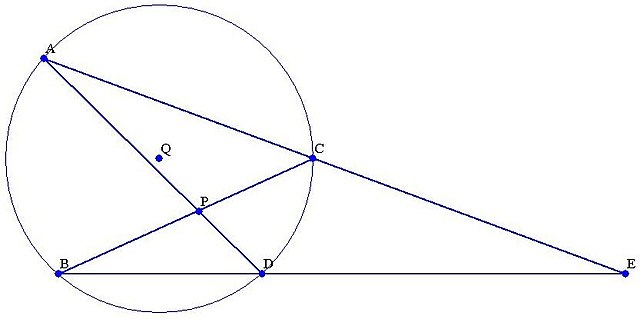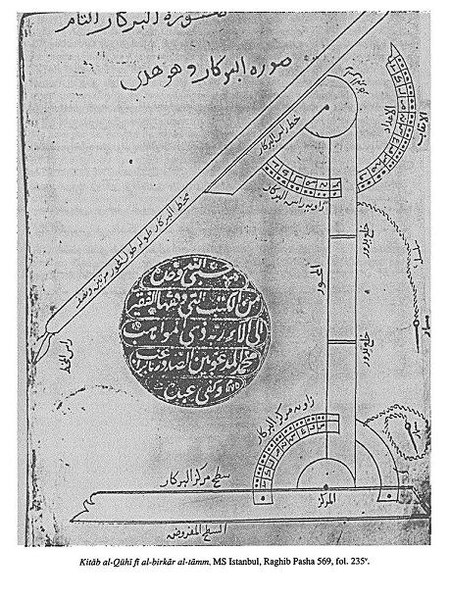Ḥasan Ibn al-Haytham was a medieval mathematician, astronomer, and physicist of the Islamic Golden Age from present-day Iraq. Referred to as "the father of modern optics", he made significant contributions to the principles of optics and visual perception in particular. His most influential work is titled Kitāb al-Manāẓir, written during 1011–1021, which survived in a Latin edition. The works of Alhazen were frequently cited during the scientific revolution by Isaac Newton, Johannes Kepler, Christiaan Huygens, and Galileo Galilei.
Front page of the Opticae Thesaurus, which included the first printed Latin translation of Alhazen's Book of Optics. The illustration incorporates many examples of optical phenomena including perspective effects, the rainbow, mirrors, and refraction.
The theorem of Ibn Haytham
Cover page of the Latin translation of Kitāb al-Manāẓir
Hevelius's Selenographia, showing Alhasen [sic] representing reason, and Galileo representing the senses
Mathematics in the medieval Islamic world
Mathematics during the Golden Age of Islam, especially during the 9th and 10th centuries, was built on Greek mathematics and Indian mathematics. Important progress was made, such as full development of the decimal place-value system to include decimal fractions, the first systematised study of algebra, and advances in geometry and trigonometry.
A page from The Compendious Book on Calculation by Completion and Balancing by Al-Khwarizmi
Engraving of Abū Sahl al-Qūhī's perfect compass to draw conic sections




![Hevelius's Selenographia, showing Alhasen [sic] representing reason, and Galileo representing the senses](https://upload.wikimedia.org/wikipedia/commons/thumb/c/ce/Houghton_Typ_620.47.452_-_Selenographia%2C_title.jpg/379px-Houghton_Typ_620.47.452_-_Selenographia%2C_title.jpg)

